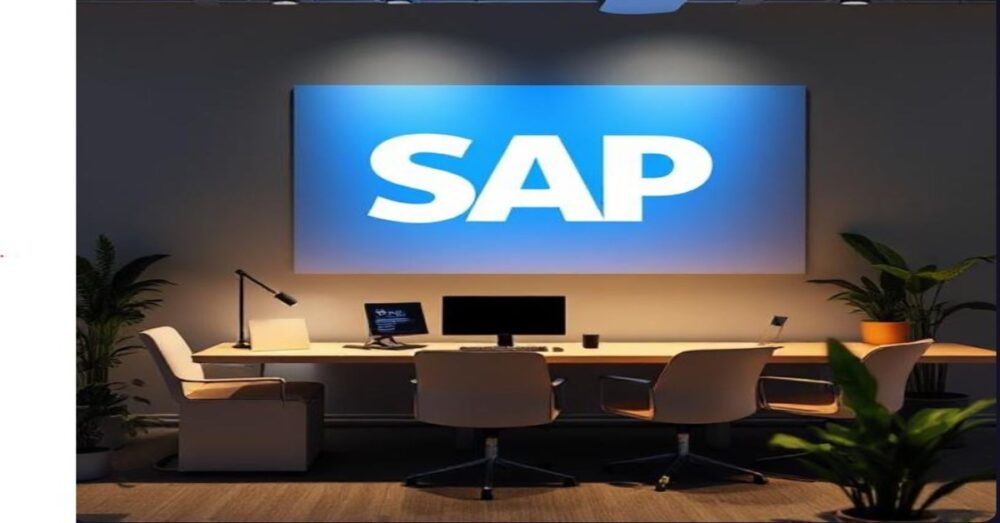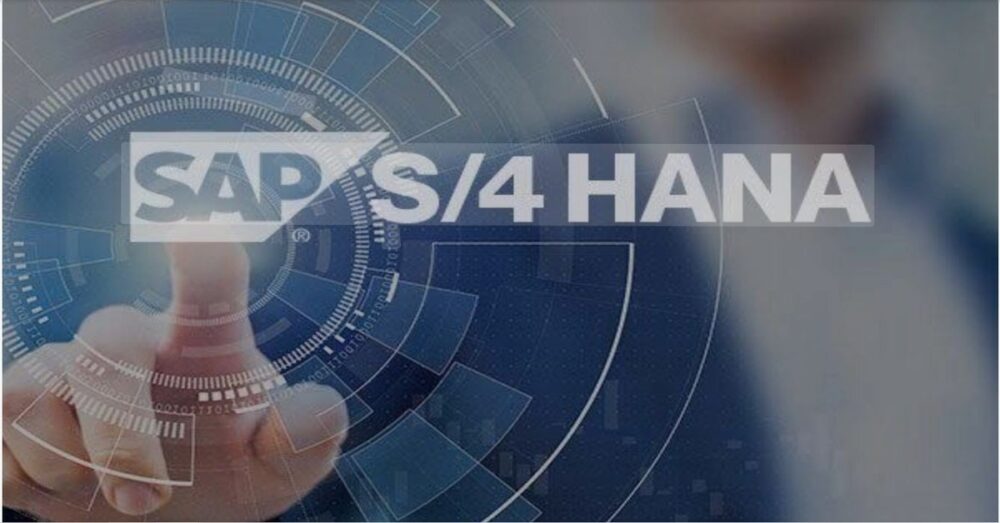
Introduction to SAP S/4HANA and the MM Module
Enterprise Resource Planning (ERP) systems are the backbone of modern businesses, enabling companies to manage processes efficiently, maintain transparency, and make real-time decisions. Among the leading ERP providers, SAP (Systems, Applications, and Products in Data Processing) stands out as a global leader.
With the introduction of SAP S/4HANA, businesses gained access to an intelligent, real-time ERP suite powered by the in-memory SAP HANA database. Unlike the earlier SAP ECC system, S/4HANA simplifies processes, integrates advanced analytics, and delivers faster processing.
One of the most critical components of S/4HANA is the Materials Management (MM) module, which plays a central role in procurement and inventory management. Almost every industry—manufacturing, retail, logistics, healthcare, and energy—relies on MM to ensure a smooth supply chain.
This blog will provide a comprehensive 360° view of SAP MM in S/4HANA, covering its functions, integration with other modules, real-world use cases, challenges, and future trends. If you’re planning a career in SAP, or if your organization is transitioning to S/4HANA, understanding MM is a must.
Understanding SAP S/4HANA MM Module
The Materials Management (MM) module is at the core of supply chain management in SAP. It handles procurement, inventory, and material valuation, ensuring companies have the right materials at the right time, in the right quantity.
Key functions of SAP MM include:
Procurement: Purchasing goods and services from vendors.
Inventory Management: Tracking stock levels, movements, and consumption.
Material Valuation: Determining the value of raw materials and finished goods.
Invoice Verification: Cross-checking invoices against purchase orders and goods receipts.
Vendor Management: Managing supplier data, performance, and collaboration.
Why is MM so important?
Because in any organization, materials drive operations. A delay in raw material procurement can halt production. Overstocking can increase costs. SAP MM provides real-time control and visibility over the flow of materials, reducing inefficiencies and enabling data-driven decision-making.
Core Features of SAP MM in S/4HANA
SAP MM is more than just a procurement tool. It’s a comprehensive solution that covers every aspect of materials management. Below are its core features:
Procurement Process Automation
Create purchase requisitions (PRs) for materials needed.
Convert PRs into purchase orders (POs).
Manage requests for quotations (RFQs) and compare vendor offers.
Track the status of each procurement document in real time.
Inventory Management
Goods receipt (GR): Recording incoming materials.
Goods issue (GI): Issuing materials for production or sales.
Stock transfers: Moving goods between plants or warehouses.
Batch management: Tracking materials with unique batch IDs.
Vendor Evaluation & Supplier Collaboration
Rate vendors based on delivery time, quality, and pricing.
Integrate with SAP Ariba for supplier collaboration.
Improve procurement decisions using historical vendor performance data.
Material Valuation and Account Determination
Assign valuation classes and price control methods.
Automate financial postings when goods are received or issued.
Ensure accurate balance sheet reporting of inventory.
Invoice Verification
Compare supplier invoices with POs and GRs.
Detect discrepancies quickly (e.g., overbilling, incorrect quantities).
Automate payments after successful invoice verification.
Reporting and Analytics
Real-time dashboards via SAP Fiori apps.
Predictive analytics for procurement trends.
Customized KPIs for supply chain optimization.
Key Master Data in SAP MM
In SAP S/4HANA MM, master data is the foundation of all transactions. Without proper master data, procurement and inventory processes can face errors and inconsistencies.
Here are the most important master data elements in MM:
Material Master
The Material Master Record contains all essential information about a material—such as its description, unit of measure, valuation, storage location, and procurement type.
- Views in Material Master: Basic data, purchasing, accounting, sales, storage, etc.
- Example: For a raw material like “Steel Rod,” data would include size, weight, stock level, valuation method, and preferred vendors.
Vendor Master
This record stores details about vendors/suppliers from whom the company procures materials.
- Contains: Vendor name, address, bank details, payment terms, and tax information.
- Integration: Shared across modules like FI (Finance) for invoice posting and payment processing.
Purchasing Info Records
These link a material with a vendor and store details such as price, lead time, and terms of delivery.
- Example: Vendor A supplies “Steel Rod” at $50/unit with a 10-day delivery time.
Source List
Defines approved sources for procuring a material. If a source list is maintained, the system ensures purchase orders are only created for listed vendors.
Quota Arrangements
Used when multiple vendors supply the same material. The system allocates procurement among vendors based on a defined percentage (quota).
Having accurate and up-to-date master data ensures smooth procurement cycles, accurate reporting, and compliance.
End-to-End Procurement Cycle in SAP MM
The procurement cycle in SAP MM is one of the most important processes in any organization. It ensures that materials are purchased and delivered on time.
Here’s the step-by-step cycle in SAP S/4HANA MM
Need Identification
A department identifies the need for materials or services.
Example: Production requires 500 units of raw material.
Purchase Requisition (PR)
Created in the system specifying material, quantity, and delivery date.
Can be generated manually or automatically via Material Requirements Planning (MRP).
Request for Quotation (RFQ)
Sent to multiple vendors to request pricing and delivery terms.
Vendor Selection
Vendors respond with quotations.
System compares prices, lead times, and terms.
Purchase Order (PO) Creation
PO is created and sent to the selected vendor.
Legally binding document outlining quantity, price, and terms.
Goods Receipt (GR)
When materials arrive, GR is posted in the system.
Updates stock levels and triggers quality inspection if required.
Invoice Verification
Supplier sends invoice.
System cross-checks invoice with PO and GR to ensure accuracy.
Payment Processing
-
- Once invoice is verified, payment is released via integration with SAP FI (Finance).
This end-to-end cycle ensures seamless collaboration between procurement, inventory, finance, and vendor management.
Integration of MM with Other SAP Modules

One of SAP’s biggest strengths is module integration. SAP MM does not work in isolation; it connects with other modules to provide a unified ERP experience.
MM with FI (Financial Accounting)
When goods are received, accounting entries are automatically created.
Example: Goods receipt creates debit in inventory account and credit in GR/IR account.
MM with CO (Controlling)
Captures procurement costs and assigns them to cost centers or projects.
Useful for profitability analysis.
MM with SD (Sales and Distribution)
Links procurement with customer orders.
Example: Stock purchased specifically for fulfilling a customer order.
MM with PP (Production Planning)
Raw materials from MM are consumed in production.
Ensures real-time visibility of stock for production planning.
MM with WM/EWM (Warehouse Management)
- Goods received in MM are managed at storage-bin level in WM/EWM.
- Ensures efficient warehouse operations and material flow.
This integration ensures end-to-end visibility, minimizes duplication, and enhances decision-making.
Benefits of Using SAP S/4HANA MM Module
Implementing SAP MM in S/4HANA offers businesses strategic and operational advantages:
Real-Time Data Visibility
Instant updates of stock levels, procurement status, and vendor performance.
Helps decision-makers act quickly.
Procurement Automation
Reduces manual effort in creating POs, approvals, and vendor communication.
Ensures accuracy and speeds up procurement cycles.
Cost Savings
Optimized procurement reduces overstocking.
Better vendor negotiations through analytics.
Compliance and Risk Management
Automated checks ensure compliance with tax regulations and company policies.
Audit trails enhance transparency.
Enhanced Supplier Collaboration
Integration with SAP Ariba and supplier portals improves relationships.
Vendors get real-time visibility into order status.
Scalability and Flexibility
- Suitable for both SMEs and large enterprises.
- Cloud deployment ensures scalability as businesses expand.
In short, SAP MM in S/4HANA is not just a procurement tool—it’s a strategic enabler that helps businesses become more agile, cost-efficient, and data-driven.
Enhancements in SAP S/4HANA MM

The S/4HANA version of MM brings several improvements over the traditional SAP ECC MM module. These enhancements focus on simplification, user experience, and advanced analytics.
Simplified Data Model
In ECC, multiple tables stored procurement and inventory data (e.g., MKPF, MSEG).
In S/4HANA, data structures are simplified with tables like MATDOC (Universal Journal for material documents).
This reduces redundancy, improves reporting speed, and ensures consistency.
Fiori-Enabled Procurement
SAP Fiori apps provide a modern, intuitive user interface.
Procurement officers can approve purchase requisitions, monitor deliveries, or check vendor invoices directly from mobile devices.
Example apps: “Manage Purchase Orders”, “Track Purchase Requisition Items”.
Real-Time Analytics
With the in-memory HANA database, users get instant insights into procurement spend, stock movements, and vendor performance.
Embedded analytics eliminates the need for separate BI systems.
Machine Learning Integration
Predictive analytics suggests vendors, pricing, or reorder points.
Automated anomaly detection flags unusual invoices or procurement delays.
Advanced Vendor Collaboration
- Integration with SAP Ariba Network allows real-time collaboration with suppliers for POs, invoices, and contracts.
- Reduces communication gaps and increases efficiency.
These enhancements make MM in S/4HANA more intelligent, user-friendly, and efficient compared to ECC.
Real-World Use Cases of SAP MM
SAP MM is used in virtually every industry. Let’s look at practical scenarios where companies rely on this module:
Retail Industry
Challenge: Managing thousands of SKUs across multiple stores.
Solution: MM ensures efficient procurement of products, stock transfers between warehouses, and real-time stock visibility.
Benefit: Prevents stockouts and overstocking.
Manufacturing Industry
Challenge: Timely procurement of raw materials for production.
Solution: MM integrates with PP (Production Planning) to trigger automatic PRs based on demand.
Benefit: Reduces production downtime and ensures continuous operations.
Pharmaceuticals
Challenge: Compliance with batch management and quality standards.
Solution: MM with QM ensures batch tracking and quality inspections for every goods receipt.
Benefit: Meets regulatory requirements and ensures patient safety.
Logistics and Transportation
- Challenge: Complex vendor and freight management.
- Solution: MM integrates with TM (Transportation Management) and EWM (Extended Warehouse Management).
- Benefit: Streamlined vendor collaboration and improved delivery times.
These examples highlight how MM adapts to different industries and operational models.
Common Challenges in Implementing SAP MM

Despite its benefits, implementing SAP MM comes with challenges:
Data Migration
Legacy data is often inconsistent or incomplete.
Migrating to S/4HANA requires cleansing and harmonization
High Implementation Costs
Licensing, consulting, and training costs can be significant.
Especially challenging for SMEs
Change Management
Employees accustomed to old systems may resist adopting S/4HANA.
Proper training and workshops are essential.
Customization vs. Standardization
Companies often over-customize MM processes.
This can complicate upgrades and maintenance.
Integration with Third-Party Tools
- Businesses using multiple external solutions may face integration hurdles.
👉 Mitigation strategies include phased rollouts, effective governance, and ongoing training.
Learning Path for SAP MM in S/4HANA
If you’re planning a career in SAP MM, here’s how you can start:
Prerequisites
Basic understanding of ERP systems.
Knowledge of procurement and supply chain processes.
Learning Resources
SAP Learning Hub – official training.
openSAP – free courses on S/4HANA.
SAP blogs, YouTube tutorials, and e-learning platforms.
Certification Path
SAP Certified Application Associate – S/4HANA Sourcing and Procurement.
Covers configuration, procurement cycle, and integration.
Career Roles
- SAP MM Consultant.
- Procurement Analyst.
- Supply Chain Specialist.
- SAP S/4HANA Solution Architect.
Learning SAP MM opens high-demand career opportunities across industries.
Step-by-Step Guide for Beginners in SAP MM

Here’s a simple hands-on workflow for someone new to SAP MM:
Create Material Master
Transaction: MM01
Enter material type, description, unit of measure.
Create Vendor Master
Transaction: XK01
Add vendor details (name, bank, tax).
Create Purchase Requisition
Transaction: ME51N
Define material, quantity, and delivery date.
Convert PR to Purchase Order
Transaction: ME21N
Select vendor and terms.
Post Goods Receipt
Transaction: MIGO
Update inventory when goods are received.
Invoice Verification
Transaction: MIRO
Match invoice with PO and GR.
These steps form the backbone of procurement operations in SAP MM.
Future Trends in SAP MM with S/4HANA
SAP MM is evolving rapidly with technology and market needs. Future trends include:
- AI and ML in Procurement: Automated vendor recommendations, dynamic pricing.
- Blockchain: Secure, transparent contracts with vendors.
- IoT Integration: Real-time monitoring of stock in warehouses.
- Sustainability: Eco-friendly sourcing and carbon tracking.
- Cloud Adoption: Increased use of SAP S/4HANA Cloud for SMEs.
These trends will make MM even more intelligent, automated, and sustainable.
Future Trends in SAP MM with S/4HANA
SAP MM is evolving rapidly with technology and market needs. Future trends include:
- AI and ML in Procurement: Automated vendor recommendations, dynamic pricing.
- Blockchain: Secure, transparent contracts with vendors.
- IoT Integration: Real-time monitoring of stock in warehouses.
- Sustainability: Eco-friendly sourcing and carbon tracking.
- Cloud Adoption: Increased use of SAP S/4HANA Cloud for SMEs.
These trends will make MM even more intelligent, automated, and sustainable.
FAQs on SAP S/4HANA MM
Q1: What is SAP MM used for?
It’s used for procurement, inventory management, and vendor management.
Q2: How is SAP MM different in S/4HANA vs ECC?
S/4HANA MM has a simplified data model, real-time analytics, and Fiori apps.
Q3: Is SAP MM still in demand in 2025?
Yes, MM is one of the core modules, highly in demand across industries.
Q4: How long does it take to learn MM?
With consistent practice, 3–6 months for basics; 1 year for advanced skills.
Q5: Do all companies use MM?
Most manufacturing, retail, logistics, and pharma companies use MM.
Q6: What are the key transactions in MM?
MM01 (Material Master), ME21N (PO), MIGO (Goods Receipt), MIRO (Invoice).
Conclusion
The SAP S/4HANA MM module is a powerhouse for procurement and inventory management, enabling organizations to run leaner, smarter, and faster supply chains.
From procurement cycle automation to real-time inventory tracking and vendor collaboration, MM ensures that businesses minimize costs and maximize efficiency.
For professionals, learning SAP MM is a career accelerator. For organizations, implementing MM in S/4HANA means future-ready operations aligned with digital transformation.
As industries move toward AI-driven, sustainable supply chains, the role of SAP MM will only grow stronger. Mastering it today ensures relevance and success in the ERP world of tomorrow.
